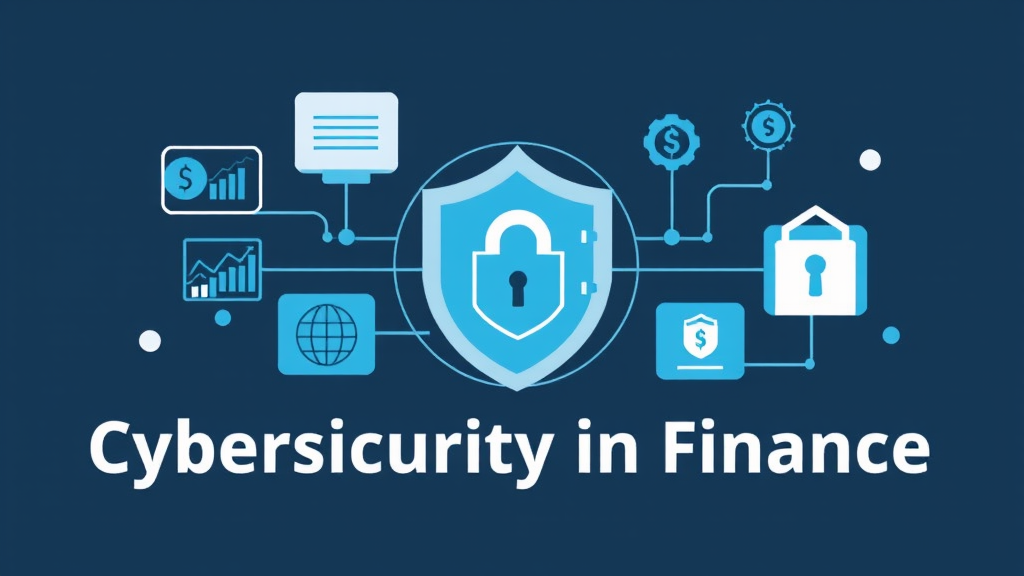Introduction to Cybersecurity in Finance
The Importance of Cybersecurity in the Financial Sector
In the financial sector, cybersecurity is crucial for protecting sensitive data and maintaining trust. Financial institutions handle vast amounts of personal and financial information, making them prime targets for cybercriminals. A single breach can lead to significant financial losses and damage to reputation. This reality underscores the need for robust security measures. Cybersecurity protocols must evolve continuously to counteract emerging threats. Staying informed is essential. Regular training for employees can mitigate risks. Awareness is key in preventing attacks. Investing in advanced security technologies is not optional; it is a necessity.
Overview of Common Cyber Threats
Cyber threats in finance are diverse and evolving. Phishing attacks often target employees to gain access to sensitive information. These attacks can be highly deceptive. Ransomware is another significant threat, encrypting data and demanding payment for its release. This can cripple operations. Additionally, insider threats pose risks from within the organization. Employees may unintentionally or maliciously compromise security. Awareness and training are vital. Organizations must prioritize cybersecurity measures. Protecting assets is essential for maintaining trust.
Types of Cyber Threats in Cryptocurrency
Phishing Attacks and Social Engineering
Phishing attacks exploit human psychology to deceive individuals. Attackers often impersonate trusted entities to gain sensitive information. This tactic can lead to unauthorized access to financial accounts. Social engineering techniques further manipulate victims into revealing confidential data. These methods can be highly effective. Awareness of these threats is crucial for financial security. Regular training can help mitigate risks. Understanding these tactics is essential for protection. Knowledge is power in cybersecurity.
Malware and Ransomware Risks
Malware and ransomware pose significant risks in cryptocurrency. These malicious software types can disrupt operations and compromise sensitive data. Common forms include:
Each type can lead to severe financial losses. Understamding these threats is essential for effective risk management. Regular software updates can help mitigate vulnerabilities . Proactive measures are crucial for safeguarding assets. Awareness is the first line of defense.
Best Practices for Securing Cryptocurrency Assets
Utilizing Hardware Wallets
Utilizing hardware wallets is a secure method for storing cryptocurrency. These devices keep private keys offline, reducing exposure to online threats. Key benefits include:
Regularly updating the wallet’s firmware is essential for security. Users should also create strong PINs to prevent unauthorized access. Awareness of phishing attempts is crucial. Always verify the source before entering sensitive information. Security is a continuous process.
Implementing Strong Passwords and Two-Factor Authentication
Here are 10 trending article titles for a financial website based on the latest news and analysis of financial trends: No input data
Regulatory Framework and Compliance
Understanding Global Regulations on Cybersecurity
Global regulations on cybersecurity are essential for protecting sensitive data. Different countries have established frameworks to ensure compliance. For instance, the General Data Protection Regulation (GDPR) in Europe mandates strict data protection measures. Organizations must understand these regulations to avoid penalties. Non-compliance can lead to significant financial repercussions. Regular audits can help ensure adherence to these standards. Staying informed about changes in regulations is crucial. Knowledge is power in navigating compliance challenges.
Compliance Standards for Cryptocurrency Exchanges
Cryptocurrency exchanges must adhere to strict compliance standards. These standards often include Know Your Customer (KYC) and Anti-Money Laundering (AML) regulations. Compliance helps prevent illicit activities and protects users. Non-compliance can result in hefty fines. Regular audits are necessary to ensure adherence. He should stay updated on regulatory changes. Understanding these requirements is crucial for operational integrity. Knowledge is essential for success.
Incident Response and Recovery Strategies
Developing an Incident Response Plan
Developing an incident response plan is essential for managing cybersecurity threats. This plan outlines specific steps to take during a security breach. It should include roles and responsibilities for team members. Clear communication channels are vital for effective response. Regular training ensures everyone understands their duties. He must test the plan through simulations. This practice helps identify weaknesses. A well-prepared organization can minimize damage. Awareness is key to effective recovery.
Steps for Asset Recovery After a Cyber Attack
After a cyber attack, asset recovery involves several critical steps. First, assess the extent of the damage. This evaluation helps prioritize recovery efforts. Next, isolate affected systems to prevent further loss. Implement data restoration from secure backups. Communication with stakeholders is essential during this process. Transparency builds trust and confidence. Finally, conduct a thorough post-incident analysis. This review identifies vulnerabilities and improves future defenses. Awareness is crucial for ongoing security.
The Future of Cybersecurity in Finance
Emerging Technologies and Their Impact
Emerging technologies are reshaping cybersecurity in finance. Artificial intelligence enhances threat detection and response capabilities. These systems can analyze vast amounts of data quickly. Machine learning algorithms identify patterns indicative of fraud. Blockchain technology also offers increased transparency and security. It can reduce the risk of data tampering. However, these advancements also introduce new vulnerabilities. Organizations must stay vigilant against evolving threats. Awareness is essential for effective risk management.
Preparing for Evolving Cyber Threats
Preparing for evolving cyber threats is essential in finance. Organizations must adopt proactive security measures to mitigate risks. Regular vulnerability assessments help identify potential weaknesses. He should implement adaptive security frameworks to respond effectively. Continuous monitoring of systems is crucial for early threat detection. Awareness training for employees enhances overall security posture. Knowledge is vital in combating cyber threats. Staying informed about emerging trends is necessary.
